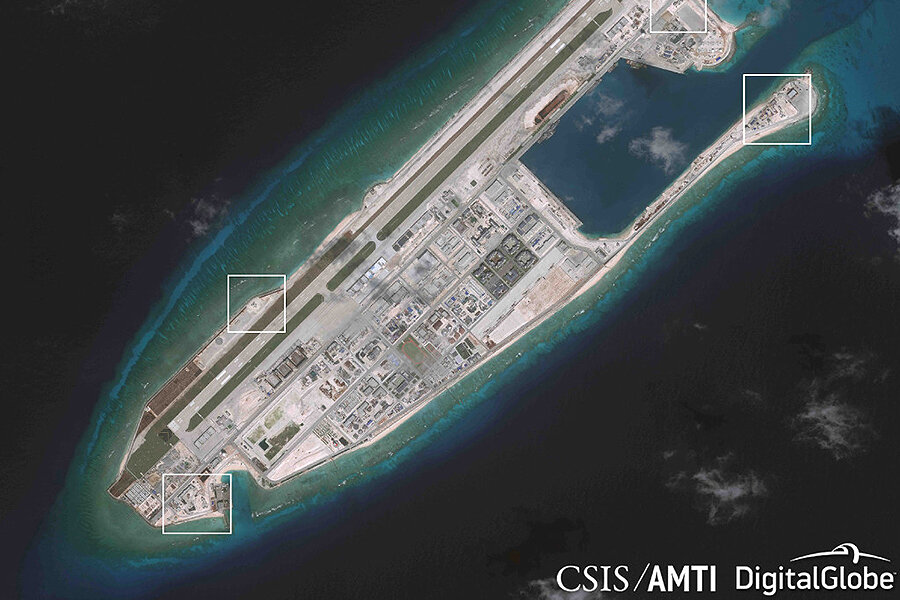China installed weapons on hotspot islands in South China Sea, report says
Loading...
Heightening tensions among several nations that have staked a claim in the South China Sea, the Chinese government appears to have installed anti-aircraft and anti-missile weaponry on its seven man-made islands in the key shipping waterway, according to an American think tank's new report.
The Center for Strategic and International Studies (CSIS) issued the finding in a report late Wednesday, identifying the newly constructed weapons systems in satellite images captured last month. Greg Poling, director of the CSIS Asia Maritime Transparency Initiative, said his team spent months studying the imagery before confidently identifying the newly built structures as weapons – news that threatens to further fluster international relations in the region.
"This is militarization," Mr. Poling told Reuters. "The Chinese can argue that it's only for defensive purposes, but if you are building giant anti-aircraft gun and CIWS emplacements, it means that you are prepping for a future conflict."
"They keep saying they are not militarizing, but they could deploy fighter jets and surface-to-air missiles tomorrow if they wanted to," Poling added. "Now they have all the infrastructure in place for these interlocking rings of defense and power projection."
Beijing contends that the islands – which it built in recent years atop coral reefs to support airstrips, barracks, lighthouses, and other infrastructure about 1,000 miles off the Chinese mainland – are legal and legitimate. Geng Shuang, a spokesman for the Chinese Foreign Ministry, said during a regular news briefing that he "did not understand" the situation described in the report.
"The Nansha islands are China's inherent territory," he said. "China's building of facilities and necessary territorial defensive facilities on its own territory is completely normal."
China says its aim is to increase maritime safety in the region, but Taiwan, Vietnam, the Philippines, Malaysia, and Brunei also claim territory in the waterway. The Philippines, for instance, has civilians and troops positioned on reefs and islands near China's artificial islands, prompting Philippines Defense Secretary Delfin Lorenzana to express concern at the report on China's weaponry.
"If true, it is a big concern for us and the international community who uses the South China Sea lanes for trade," he told the Associated Press. "It would mean that the Chinese are militarizing the area, which is not good."
An estimated $5 trillion worth of global trade passes each year through the South China Sea, where the US Navy asserts a right to operate, including in the waters near China's new islands. Americans say their missions in the area are "freedom of navigation" operations, which China has criticized.
The United States has committed to increasing its presence in the area, but that commitment could be in question, with the incoming administration of US President-elect Donald Trump, who took a phone call from the Taiwan's president and cast doubt on the "One China" policy, angering Beijing.
"The timing is significant in that these first clear images come amid Trump's challenging comments about China and its South China Sea fortresses," Alexander Neill, a senior fellow for Asia-Pacific security for the International Institute for Strategic Studies, told the AP.
At the same time, however, the latest development is not entirely unexpected, according to Ian Storey, a senior fellow with the The Institute of Southeast Asian Studies (ISEAS) Yusof Ishak Institute in Singapore.
"From the outset, it's been quite obvious that the artificial islands were designed to serve as military outposts in the South China Sea," he told Reuters.
This report contains material from Reuters and the Associated Press.








